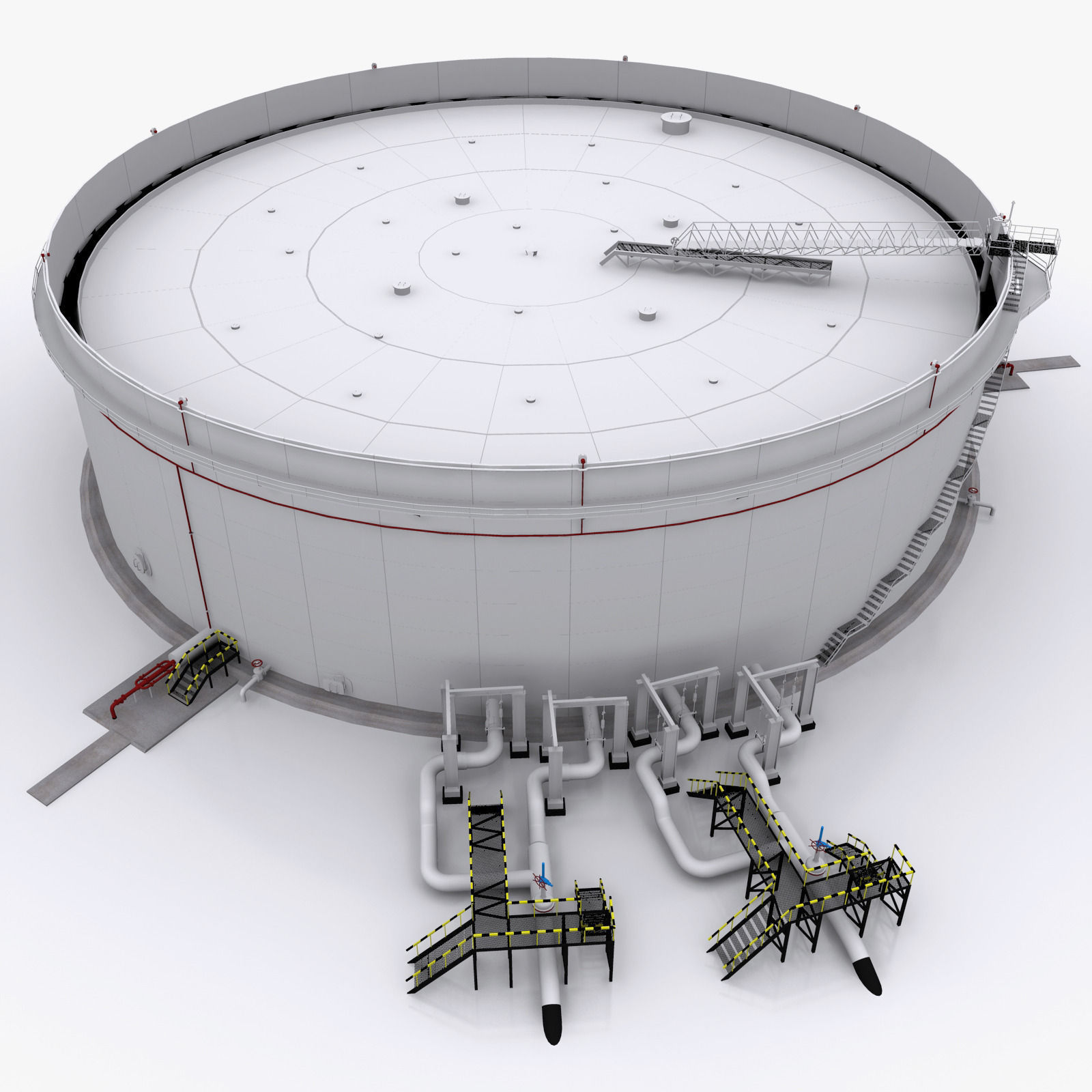
During the storage of fuel and lubricant materials (FLM), the serious problem consists in the liquid expansion and contraction depending on the ambient temperature. In the case when the storage is a rigid metal tank, it has some space filled with air so that the container would not be deformed due to the expansion and contraction. The FLM evaporation occurs in the space. When the storage is small and its safety is not particularly regulated, these vapors are simply vented to the atmosphere. This way, the losses of the stored substance as well as the contamination of the air with harmful vapors occur.
Operating Principles for the FLM Storage with a Floating Roof
The way out of this situation exists for a long time: to make the storage roof floating in the liquid stored therein. The liquid surface is covered, which protects from evaporation. Between the roof and the reservoir walls, a seal made of the elastic material is installed, which does not pass the air, vapors, and the liquid. And the losses as a result of the liquid evaporation become so low that it can be ignored.
The most common structure of the floating roof is pontoon. A cavity with the air is located inside the roof, which is divided into several parts with the sealed walls. Due to this, a minor damage to the roof in a single point will not lead to its drowning in the liquid. Such roof is made of metal. This is usually a low-carbon steel. And the walls of the reservoir for the FLM storage are also made of it.
Benefits and Drawback of the Floating Roof
Currently, many other, more advanced FLM storage methods exist that provide the absence of the liquid losses due to evaporation. For example, fuel and lubricants may be stored in soft reservoirs made of special plastics. Alternatively, a vapor recirculation system that provides the return flow of the evaporated liquid back to the storage can be applied. The first option is more suitable for low volumes and temporary storage. The second option involves the use of the expensive equipment that is serviced by qualified specialists.
Therefore, until present, the floating roof is the most reliable, trusted and price-effective solution. By the way, the term "trusted" for storing such hazardous substances as oil products is not an excessive parameter. Elastic PVC reservoirs have been used only recently, and there are no significant statistics for its use available so far.
There are only two drawbacks of the FLM storages with floating roofs. First, we cannot use them for storing the aviation fuel. Second, you cannot use them for storing oil products that can freeze in the climate (storage of oil products with the freezing point of above 0°C is prohibited by the effective standards).
Protection Standards
Claim 2.21 of Instructions for Installing Lightning Protection for Buildings and Structures RD 34.21.122-87 states: "...On the reservoirs with floating roofs or pontoons, we have to install at least two flexible steel bridges between floating roofs or pontoons and a metal reservoir enclosure or current collectors of the lightning rods installed on the reservoir."
In PAO "Rosneft", the protection of floating roofs against the static electricity is regulated by the Rules for Technical Operation of Oil Depots. Clause 6.15.3 of these Rules states: "Usually, the earthing devices for the protection against the static electricity should be combined with the earthing devices for the electrical equipment and lightning protection. These earthing devices should be made in accordance with the requirements of the EIC, SNiP 3.05.06-85, GOST 12.1.030, RD 34.21.122-87.
The allowed resistance of the earthing device intended solely for the protection against the static electricity should be not more than 100 Ohm."
The standards of PAO "Transneft", OR-13.02-45.21.30-KTN-002-1-03, Clause 5.1, require: "On the reservoirs with floating roofs or pontoons three bridges should be installed, which are made of a flexible copper insulated wire having the cross-section of at least 16 sq. mm between the floating roof (pontoon) and a metal reservoir enclosure. The structures for securing flexible bridges (current collectors) in the reservoirs with floating roofs (pontoons) should be welded to the tube of the skylight... The earthing devices to protect against the static electricity should be combined with the earthing devices of the electrical equipment and lightning protection. The resistance of the earthing device intended solely for the protection against the static electricity should be not more than 100 Ohm."
Thus, "Rosneft" and "Transneft" have a common requirement, i.e. that the earthing resistance for the static electricity should not be more than 100 Ohm.
Spools Instead of Flexible Bypasses
The bypass should provide a free motion of the floating roof down to the position corresponding to almost entire emptying of the storage. This is required to provide the reservoir maintenance. According to GOST 31385-2008 Vertical Cylinder Steel Reservoirs for Oil and Oil Products General Specifications, the storage wall height may be up to 18 m. Hence, the maximum length of the bypass may be determined using an approximately the same value.
The classic bypass freely hanging from the reservoir top, upon its filling, is placed on the roof chaotically, often getting into the loops. This condition improves the inductance of the bypass and creates the risk of damaging the equipment or structure with the floating roof by a drawing bypass loop upon the reservoir emptying. Increase in the bypass inductance makes that the electricity flows from the floating roof with a time delay. Which is enough for the spark in particular conditions. Moreover, it is also important to consider the specifics of the operating conditions for the bypass. For example, steel and copper in the hydrogen sulfide atmosphere inside the storage are subjected to a strong corrosion, which reduces the service life of the bypass significantly and increases its resistance over time.
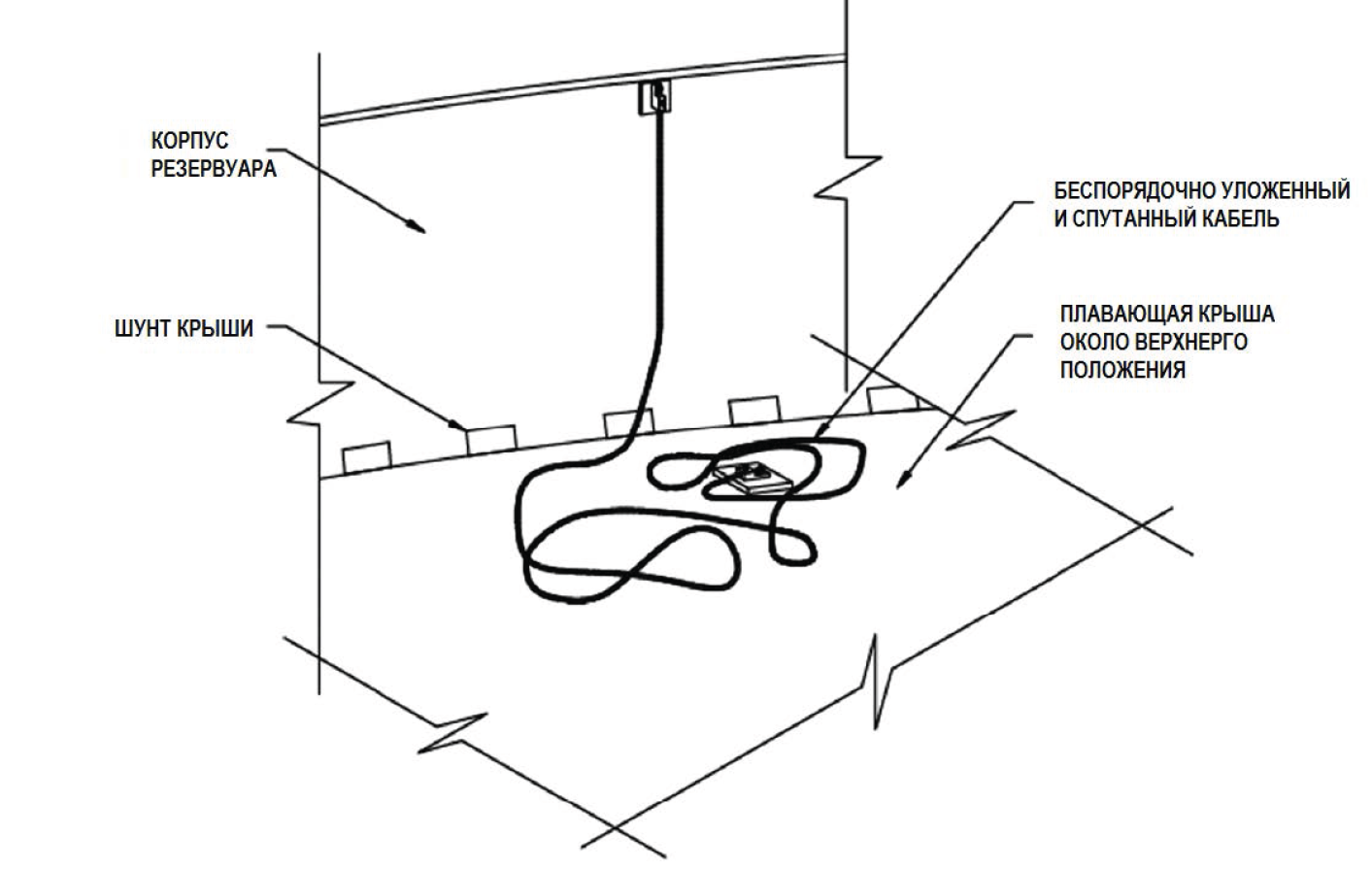
A typical bypassing conductor when the roof is in the upper position.
Note that the conductor is laid chaotically, which results in high resistance.
КОРПУС РЕЗЕРВУАРА - TANK ENCLOSURE
ШУНТ КРЫШИ - ROOF BYPASS
ПЛАВАЮЩАЯ КРЫША ОКОЛО ВЕРХНЕГО ПОЛОЖЕНИЯ - FLOATING ROOF NEAR THE TOP
БЕСПОРЯДОЧНО УЛОЖЕННЫЙ И СПУТАННЫЙ КАБЕЛЬ - CHAOTICALLY LAID AND ENTANGLED CABLE
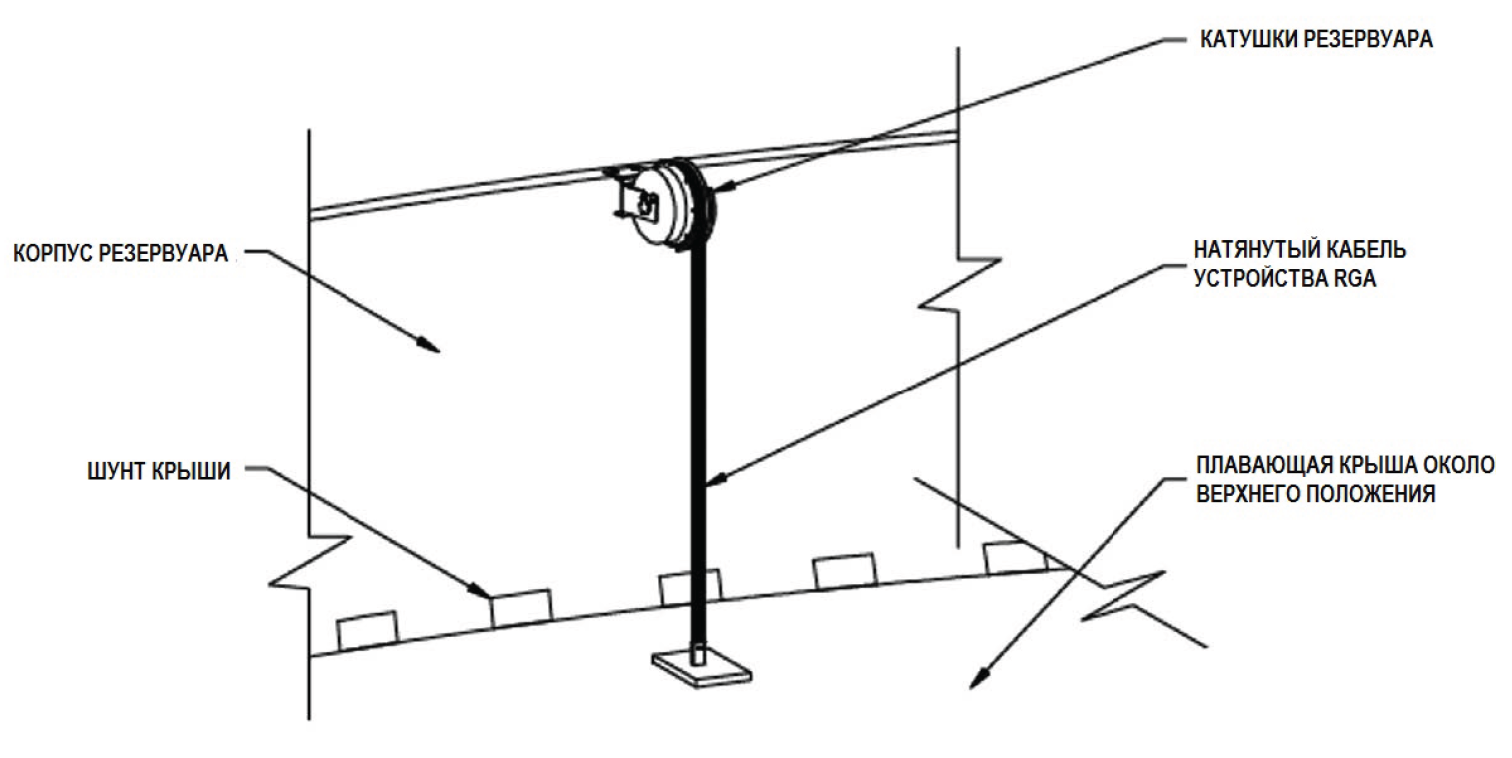
RGA installation when the roof is in the upper position
КОРПУС РЕЗЕРВУАРА - TANK ENCLOSURE
ШУНТ КРЫШИ - ROOF BYPASS
НАТЯНУТЫЙ КАБЕЛЬ УСТРОЙСТВА RGA - PULLED CABLE FOR RGA
ПЛАВАЮЩАЯ КРЫША ОКОЛО ВЕРХНЕГО ПОЛОЖЕНИЯ - FLOATING ROOF NEAR THE TOP
КАТУШКИ РЕЗЕРВУАРА - RESERVOIR SPOOLS
As an example of the device having both properties, we can provide self-retracting spools of the RGA type made by Lightning Eliminators.
Compliance with the Customer's Instructions
In the industry and corporate standards provided above, no self-retracting spools are mentioned. They are used for convenience and benefits during operation as well as their long service life and reliability. Such spools are still rarely used in Russia. The benefits of their use in the oil companies are to be tested yet. To assist in the correct choice of the suitable earthing spools today, it is better to contact engineers of the ZANDZ Technical Center. The experienced specialists will help you in studying the spool use conditions and their compliance with the internal standards of the customer company.
Related Articles:
 Lightning protection of oil and gas facilities
Lightning protection of oil and gas facilities
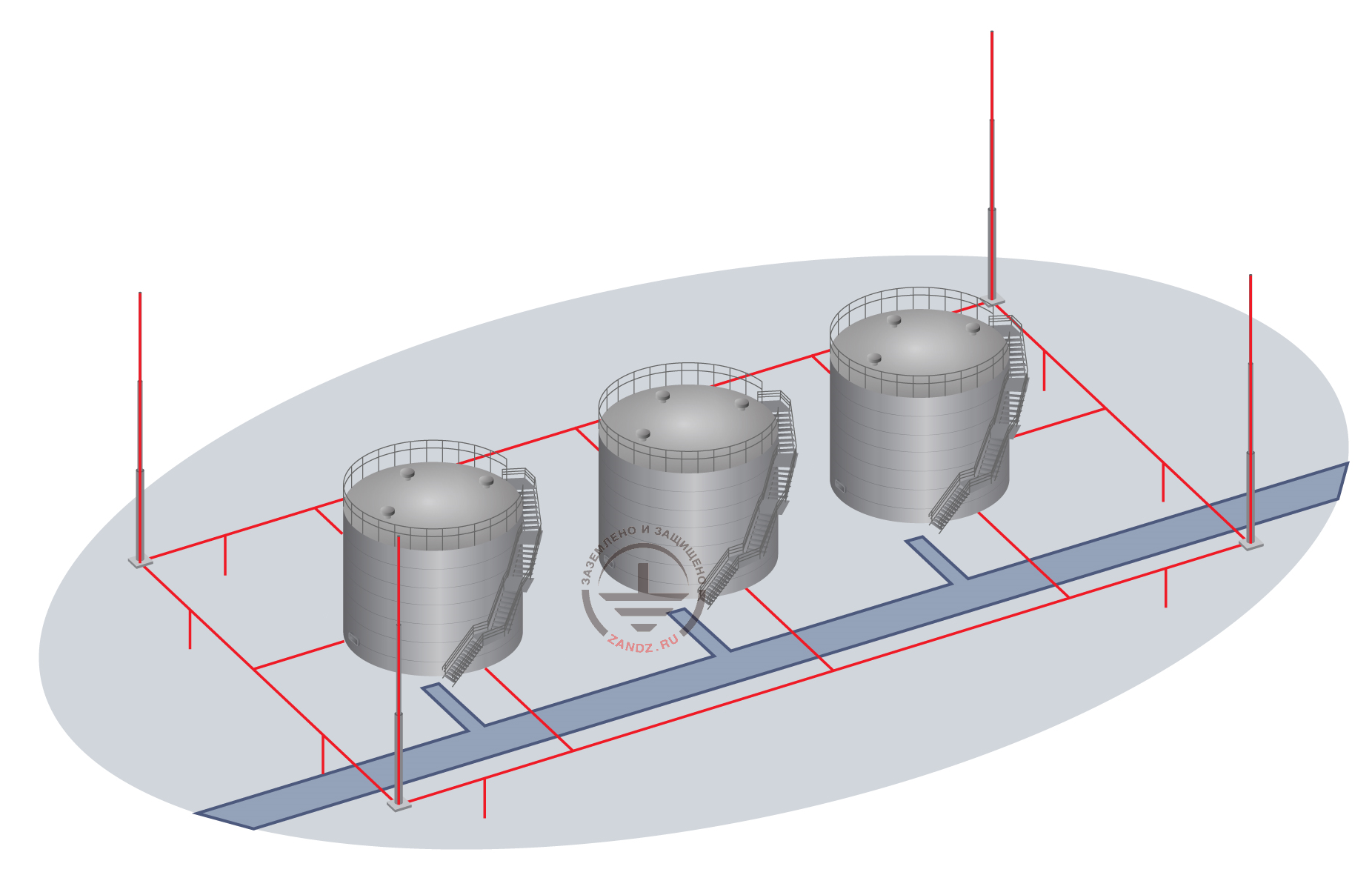 Oil storage tanks grounding and lightning protection project
Oil storage tanks grounding and lightning protection project
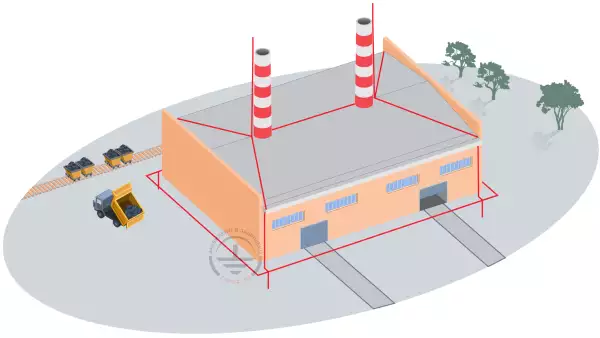
 Five Most Dangerous Effects of Lightning
Five Most Dangerous Effects of Lightning


